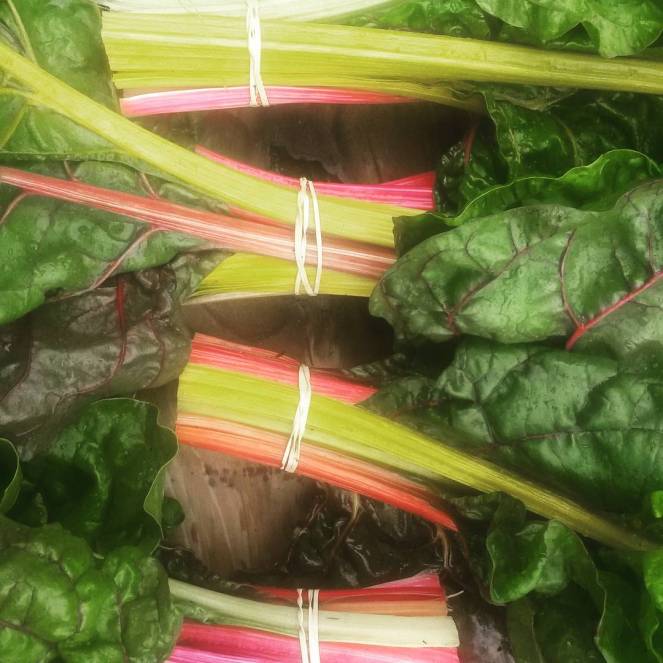This weekend’s Farm Share will most likely include:
Salad Mix (2 bags), Spinach, Kale, Hearty Greens Mix, Radishes, Turnips, and hopefully, sunshine willing, a Cucumber
This is for our Farm Share CSA members who pick up:
~ on Saturday @ the Farmers Market @ St. Stephen’s
~ on Monday @ Summer Lake

There’s a triple meaning for today’s subject line: “How to Care for Vegetables.”
– How to best store the vegetables after you get them from us to keep them most crisp and perky (and not go wilty!)
– How we best care for vegetable crops in this time of so, so much rain
– How we care for pest or disease problems in our vegetable crops while using only organic/no-chemical methods as required by our Certified Naturally Grown status.
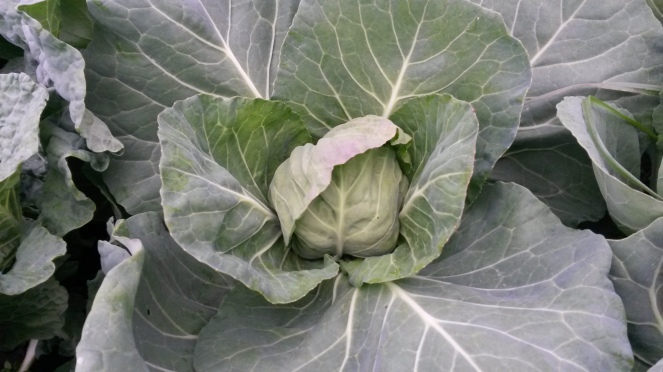
First… How to best store vegetables after getting them from us:
This is a common question from new CSA members each year. The shortest, simplest answer is that we think everything (except tomatoes) store best in an airtight bag or container in the fridge. Tomatoes keep the best flavor when stored at room temperature.
(pictured below: baby cucumbers…our second round of cucumbers for this spring)
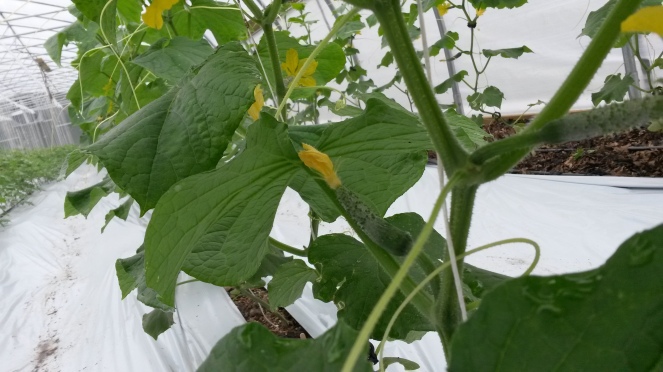
The main idea is that vegetables will continue to transpire (give off water) after being picked, so that the moisture in them is always moving into the drier air around them, unless they are in a sealed bag or container, in which case they don’t get wilty because they aren’t surrounded by dry air. Some people do more extensive things, like putting a towel in bags of greens, or placing roots (or their tops) in vessels of water in the fridge, but we find that simply keeping vegetables contained keeps the humidity level constant and prevents wilting.
If vegetables get wilty, they can most likely be revived. For cut or small greens (like our salad mix), soak in tepid water for about 15 minutes or so. Drain and spin. They will most likely be perked up. ** We highly recommend the Zyliss brand salad spinner. It is wonderful and spins greens very dry! ** For greens with long stems (like chard, kale, etc.), you can cut off the bottoms of the stems and place in a vase like flowers. They will take up the water and become turgid again.
(pictured below: future tomatoes!)

Second…How we are caring for the vegetable crops in all of this rain!
We are officially soaked with water. Our drainage is good so the plants aren’t drowning, but so much rain lends to rotting, and so little sun leads to slow plant growth. Thus, our yields will be less due to this weather pattern. (See also crop notes below.) A common component of chemical/conventional agriculture in Virginia is synthetic fungicide, used to combat fungal growth on plants in our hot, humid environment. This is one of the biggest challenges to organic growing in our climate. We don’t use any chemical fungicide, as they are known to be poisonous for people, soil microbes, the watershed, etc. We try to be as proactive as possible in avoiding fungal disease. For example: We brewed a tea of the horsetail plant this week, as its high silica content is known for aiding plants in times of too much rain. (FYI: In some cases of fungal disease, we may use organic-farming approved Copper as a treatment on plants as our soil tests allow.)
(pictured below….carrot coming along)

Third…How we care for pest or disease problems in our vegetable crops:
This is a common question on our tours and from our CSA members and market customers, as it should be since we think it is good for people to know what is on the food they are ingesting. Similar to the paragraph above, we first work to be as pro active as possible in avoiding pest or disease problems by raising very healthy plants that are not prone to infestation by pest or disease. We accomplish this by building and managing healthy, vibrant, alive, diverse, mineralized soil.
(pictured below: Last week’s Farm Share)

(pictured below: Kid-friendly green smoothies, made with organic milk, organic bananas, our kale, our microgreens, a dash of vanilla extract, and a sprinkly of nutmeg.)
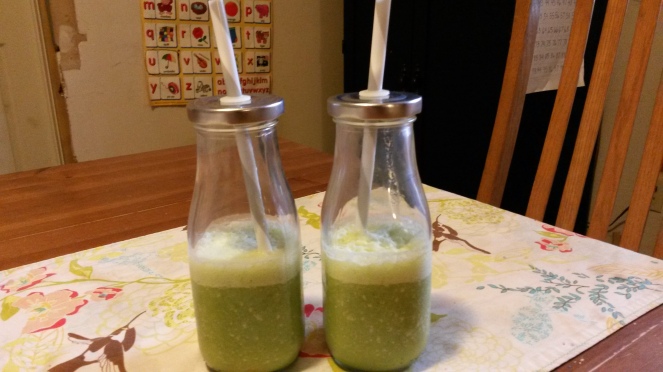
As our soil has improved over the years of us growing on this land, our pest and disease problems have significantly decreased. Our next step is to encourage beneficial insects that eat the pest/problem causing insects. We do this by having plants around the farm that the beneficial insects use as habitat. Finally, in the event of pest problems that we feel we need to treat with organic methods, we may use Pyrethrin (made from Chrysanthemum flowers), Bacillus thuringiensis (a bacteria that kills insects but is not harmful to humans), or Diatomaceous earth (a rock, crumbled into a fine white powder that is used by humans as a health supplement but which is very irritating to insects’ exoskeletons). You’re welcome!
(Pictured below: a collection of farm-oriented children’s books that live in our self-serve farmstand area, for everyone’s viewing pleasure when you visit!)

Crop Notes:
– This RAIN! We got about 5 inches of rain last week. And the 10 day forecast has rain or clouds every day. This impacts the plants here significantly. Without enough sun during these recent days of rain, the plants aren’t growing as fast as usual. Additionally, we couldn’t plant anything last week in the constant rain (the plants would have simply drowned). We’ll plant as much as we can as soon as we can, but plants need both rain and sunshine to grow. So, we’re expecting smaller than expected harvests over the next month due to the double-whammy of stunted growth and late planting. Thank you for remaining flexible with us!
– We really like to include something from the allium family in most week’s shares, but our spring onions are just not ready. (Thanks to the cold April.)
– Shares are heavy in greens (for salads and cooking) right now, as that what this spring in particular has brought a bounty of. Cucumber are growing. On the horizon for June is cabbage, broccoli, carrots, beets, cherry tomatoes, and summer squash.
Next week, the wonderful Kristin Kimball is speaking in Richmond, hosted by the Chrysalis Institute. We highly recommend attending! Get tickets here.
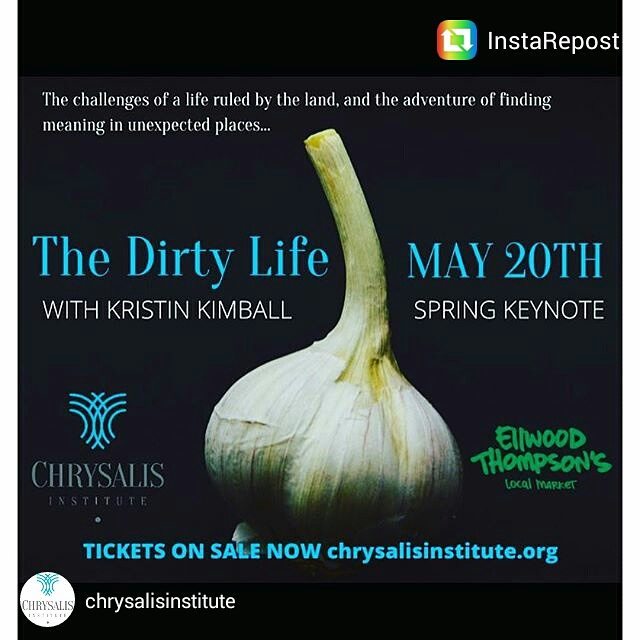
This week’s harvest includes:
Arugula, Purple Pak Choi, Rainbow Chard, Hearty Greens Mix, Kale, Microgreens, Salad Mix, Spinach….and our Organic, Naturally Leavened Bread.
Recipe suggestions:
Spaghetti with Braised Kale (you can also use our Hearty Greens Mix here)
Massaged Kale Salad with Strawberries & Almonds (any type kale works wonderfully here, and also our Hearty Greens Mix)
Roasted Radishes
Roasted Turnips with Parmesan
Homemade Greek House Salad Dressing
Spinach Salad with Pecorino, Pine Nuts, & Currants
Mizuna Pesto (Mizuna is in our Hearty Green Mix)
2016 Market Share CSA Members: Reserve your selection online to pick up Saturday, May 14th at our farm, at the Brandermill Green Market, or at the Farmers Market @ St. Stephens. Everything remaining after pre-orders will be available for purchase at the Brandermill Green Market and at the Farmers Market @ St. Stephens.
Enjoy ~
Janet, Dan, & the whole Broadfork crew
Want to follow along during the week, including Farm Stand updates? Visit us on Facebook or Instagram.
